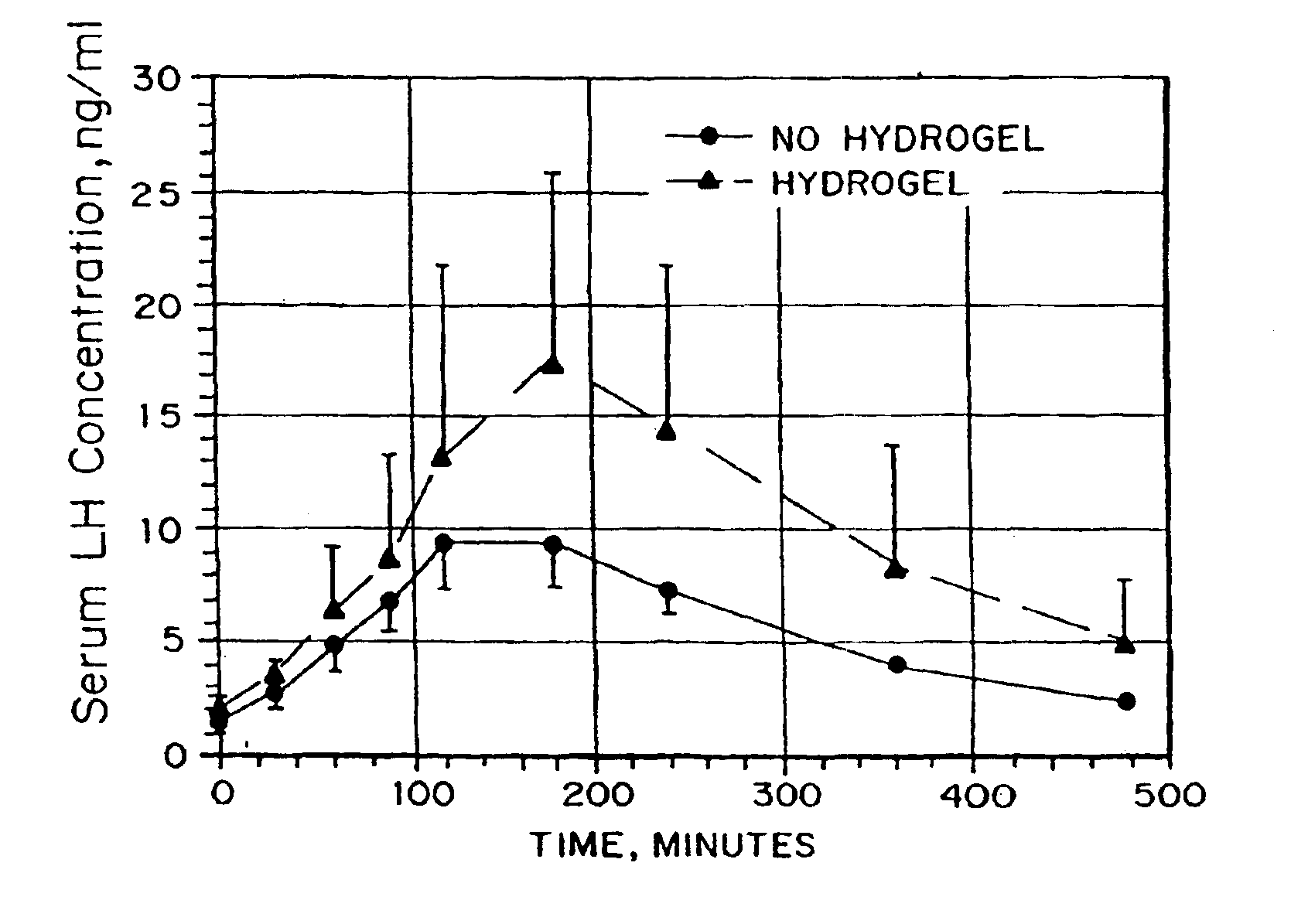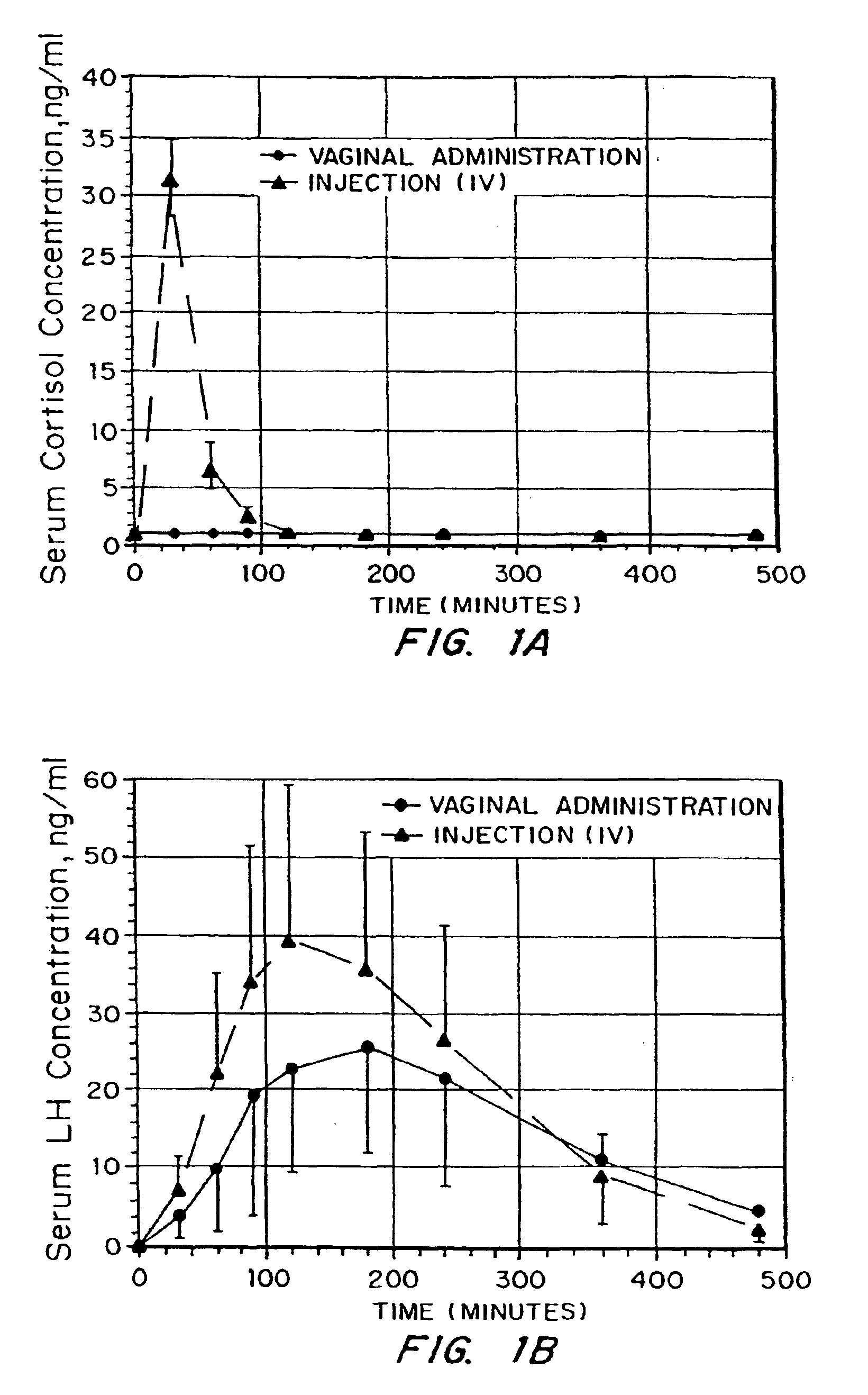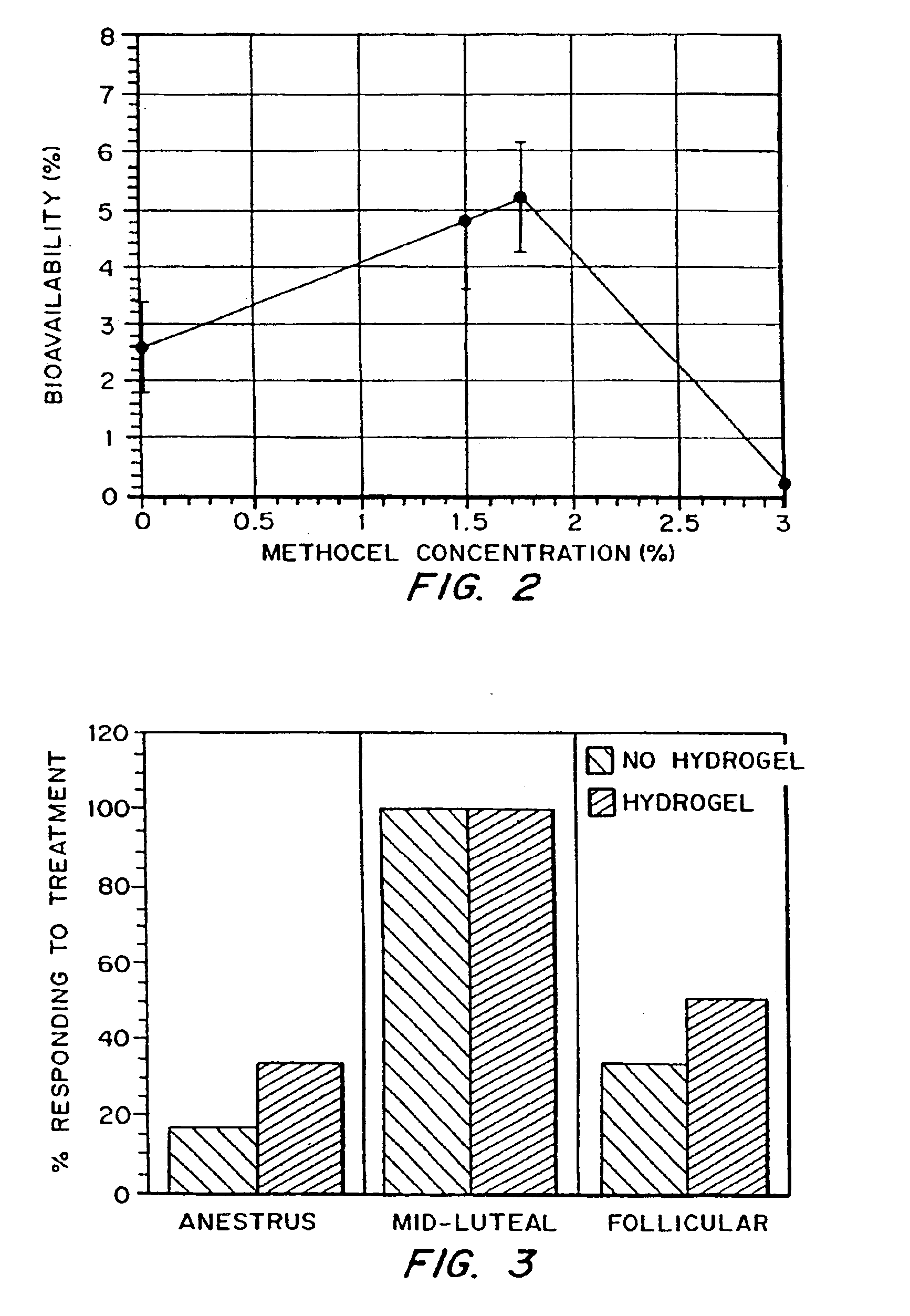Compositions and methods for enhancing receptor-mediated cellular internalization
a technology of receptors and internalization, applied in the direction of drug compositions, aerosol delivery, prosthesis, etc., can solve the problems of reducing the efficiency of lipid complexes and liposomes in transfecting dna into the nucleus of cells, affecting the cellular internalization of compounds, and destroying potential effects, etc., to improve the internalization of compounds, enhance uptake, and improve the rate of endocytosis, including nonspecific “pinocytos
- Summary
- Abstract
- Description
- Claims
- Application Information
AI Technical Summary
Benefits of technology
Problems solved by technology
Method used
Image
Examples
example 1
Peptide Transport Across the Vaginal Epithelium of Sheep
[0076]This study was intended to examine the relevance of control of the apparent viscosity of the extracellular fluid / cytosolic fluid to the enhancement of peptide drug delivery into the body via a noninvasive route by examining peptide transport across the vaginal epithelium of sheep.
A. Receptor-Mediated Transport of a Peptide, No Exogenous Steroid.
[0077]First, a peptide that undergoes receptor-mediated transport across the vaginal epithelium was identified by studying the permeation of peptides of varying molecular weight in a sheep model. Peptides were delivered vaginally to sheep in 5 ml of aqueous or methocel solutions with typical peptide concentrations of 10-40 μg / ml. A group of 18 intact ewes were utilized for these experiments. For each study, sheep were randomly assigned to a treatment group. In GnRH studies where each animal received all possible treatment combinations, each animal was assigned to an initial treatme...
example 2
Steroid and GnRH Transport
[0092]Studies were conducted to assess the involvement of steroids in modulating the transport of GnRH across the vaginal mucosa. The main objectives were to confirm the need for steroids in vaginal GnRH transport, to determine if treatment with both progesterone and estradiol were necessary, and to demonstrate down-regulation of LH secretion with daily administration of GnRH agonist.
A. Chronic Vaginal Dosing of DES to Suppress LH Secretion.
[0093]The objective was to determine if chronic vaginal dosing with 200 μg of deslorelin (“DES”) in gel would be able to suppress secretion of LH. Lower doses of DES will result in the down-regulation of the anterior pituitary gland in sheep. Ovariectomized sheep were used for the study, since they secrete high levels of LH in the-absence of ovarian steroids. The sheep were dosed daily with DES in 5 mL of gel, or gel only for 17 days. A single blood sample was collected by jugular venipuncture. Plasma was collected and a...
PUM
| Property | Measurement | Unit |
|---|---|---|
| Fraction | aaaaa | aaaaa |
| Fraction | aaaaa | aaaaa |
| Fraction | aaaaa | aaaaa |
Abstract
Description
Claims
Application Information
 Login to View More
Login to View More - R&D
- Intellectual Property
- Life Sciences
- Materials
- Tech Scout
- Unparalleled Data Quality
- Higher Quality Content
- 60% Fewer Hallucinations
Browse by: Latest US Patents, China's latest patents, Technical Efficacy Thesaurus, Application Domain, Technology Topic, Popular Technical Reports.
© 2025 PatSnap. All rights reserved.Legal|Privacy policy|Modern Slavery Act Transparency Statement|Sitemap|About US| Contact US: help@patsnap.com



